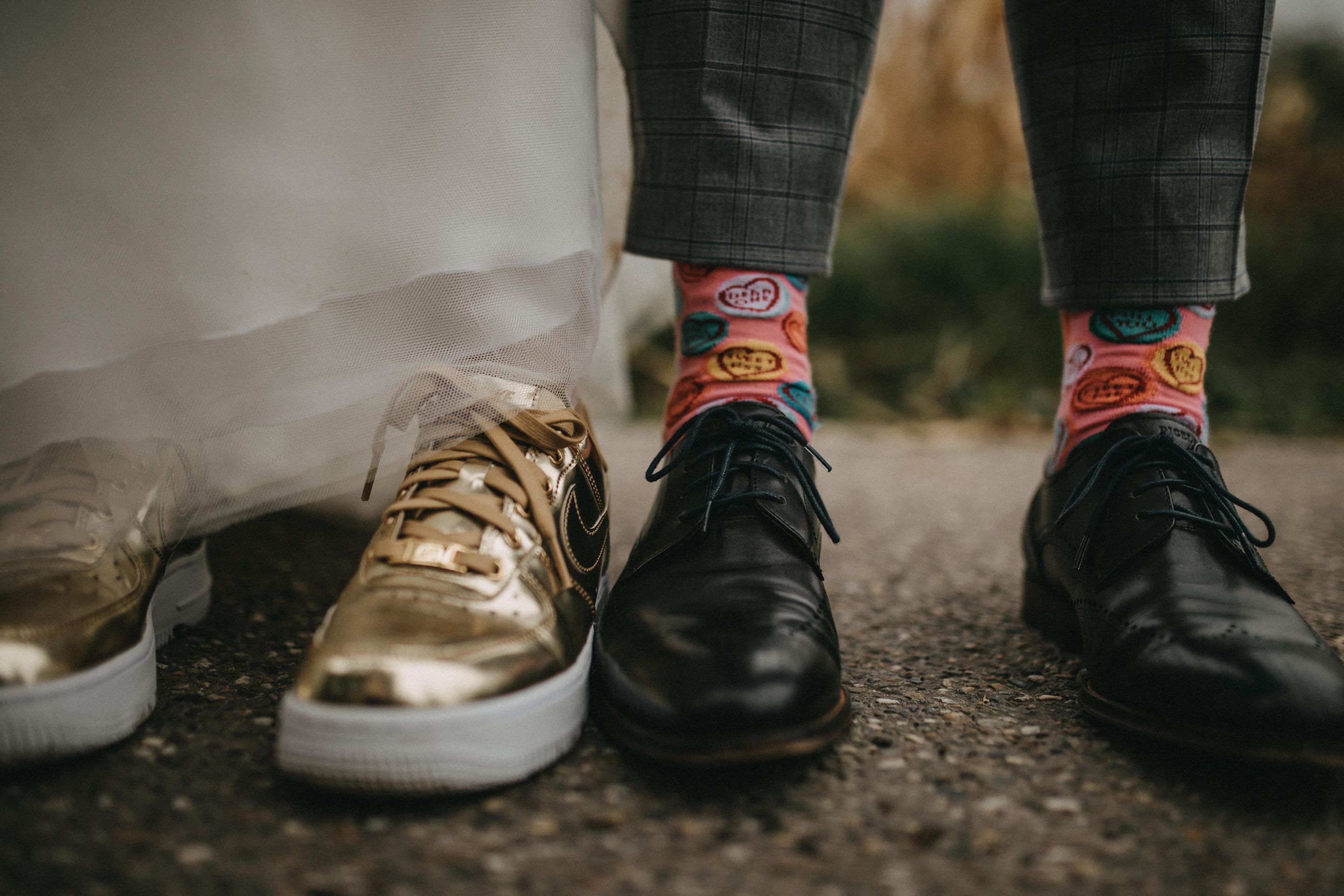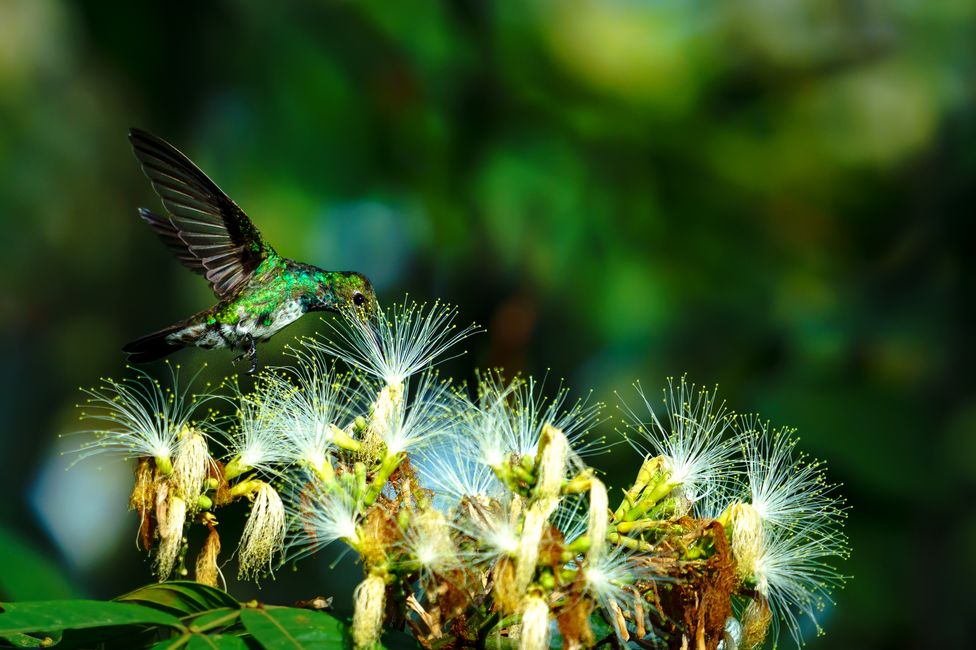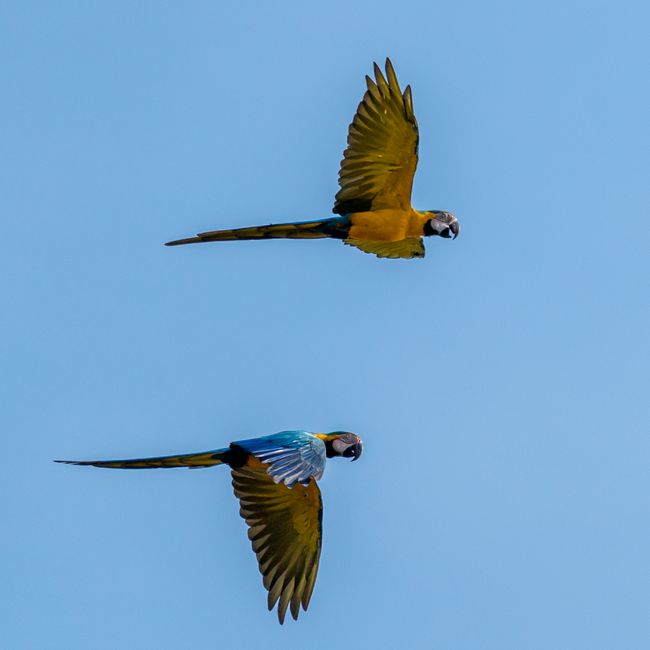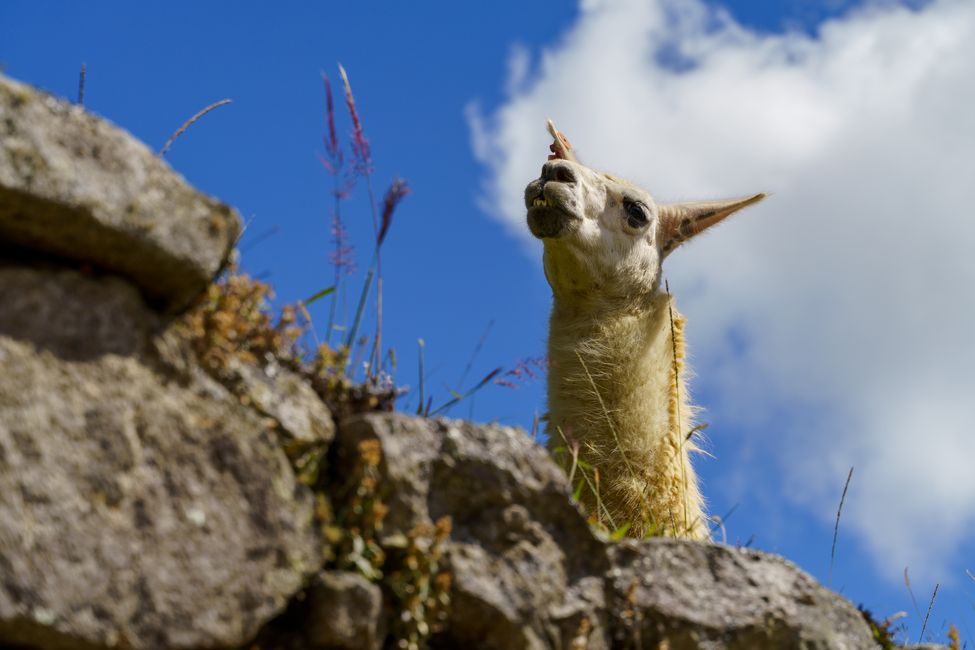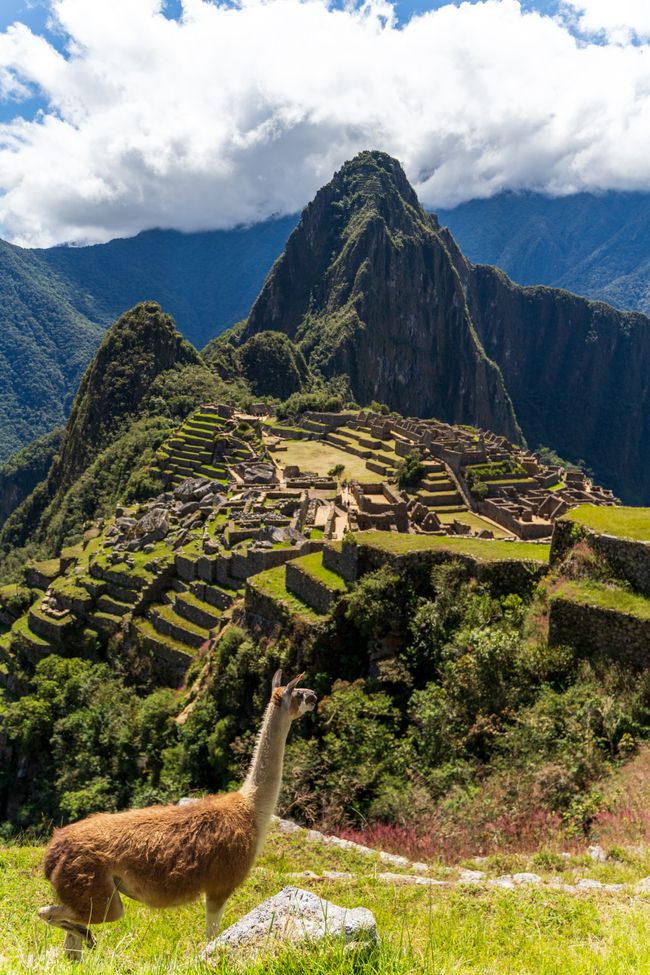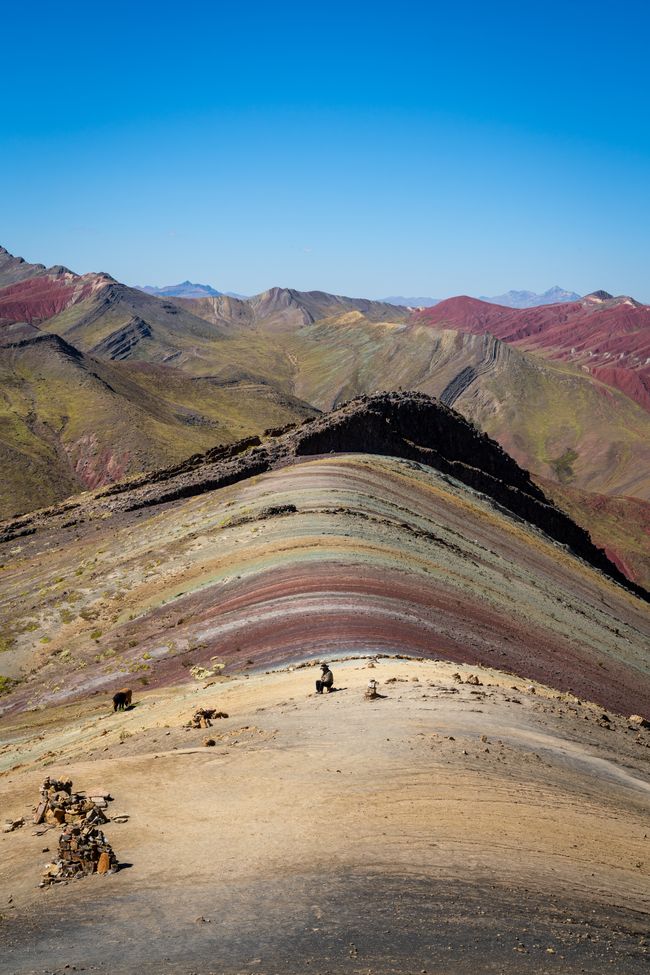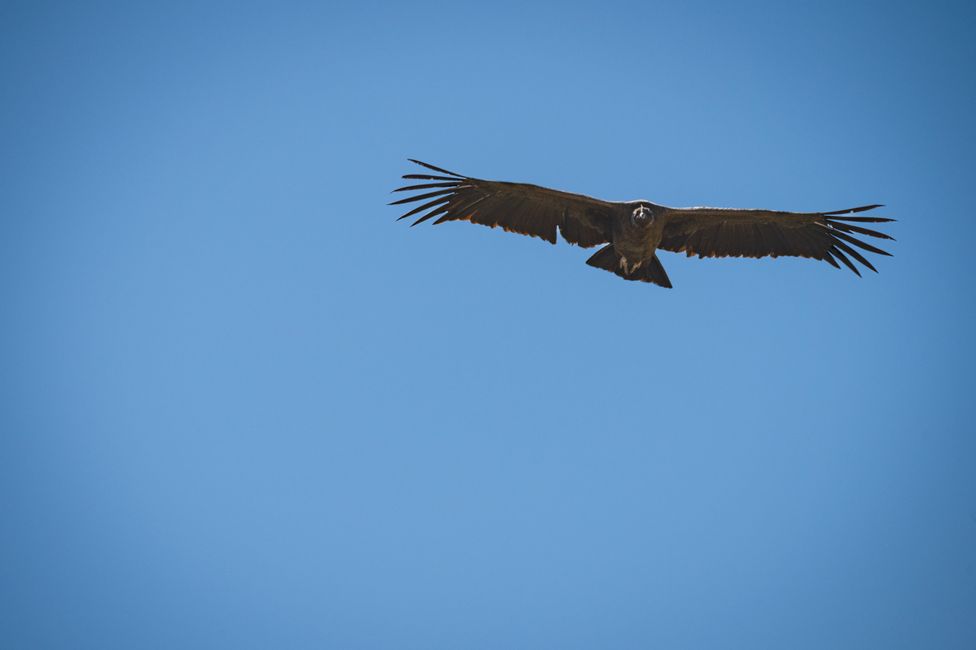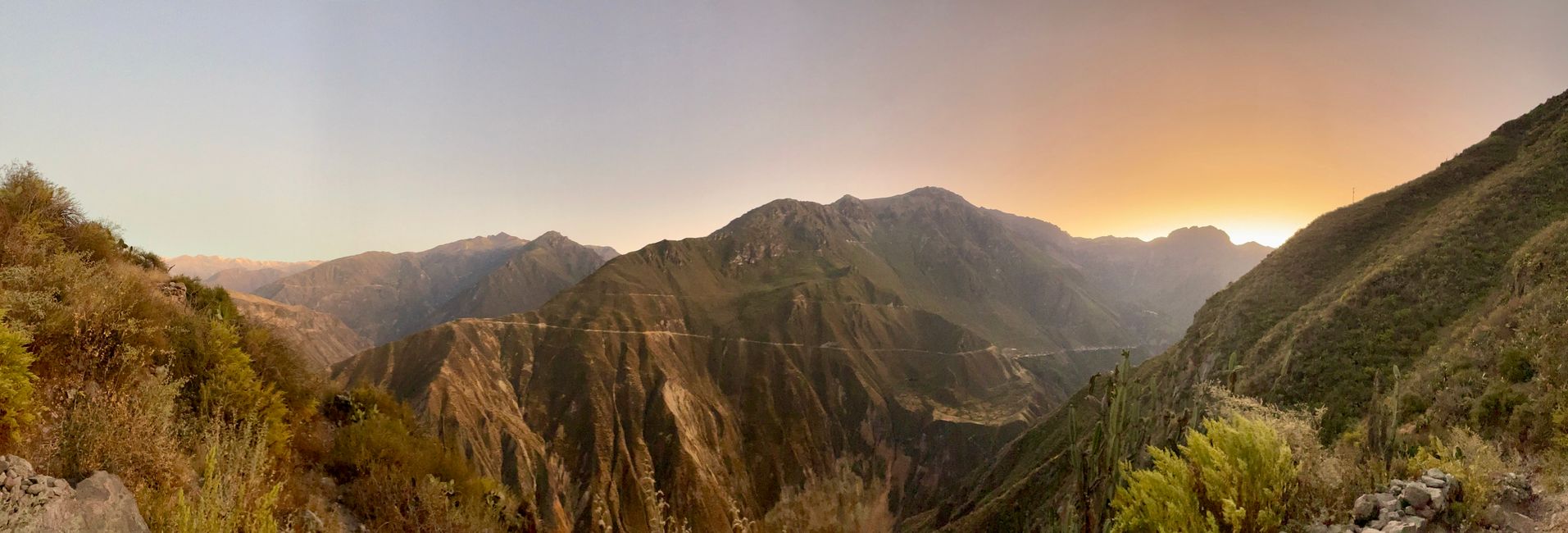In the land of the llamas
Diterbitkan: 10.06.2024
16.04.- 12.06.2024
When you think of Peru, you automatically think of Macchu Picchu. Yes, that was on our agenda too. Machu Picchu and then further. We looked at various routes from different travel companies because we had no idea what else we should see in Peru. All routes start in Lima and head south. As you have probably already noticed in the last reports, we prefer to travel to parts of a country where there are not so many tourists. We were like: OK, let's travel extensively in the north and then a bit in the south. On the fifth day, we took a very comfortable night bus from Lima to Trujillo and then a taxi along the coast to Huanchaco. We wanted to take a short breather here because Tine's circulation was still not quite up to scratch. The long flight and the nighttime noise next to our hotel, whose insulation had cardboard-like soundproofing, only allowed Tine a maximum of two hours of sleep. A large construction site, a discotheque and the horrible alarm systems of Peruvian cars, ahhhhh, just let me sleep! No sleep, no circulation. Huanchaco more than surprised us. A small, cute town with a long beach promenade. There were a few surf schools. Neither of us had expected surfing to be so popular. But of course, if a country has more than 2500km of beaches, why not surf? So we both stayed longer in this great town, where you can eat excellent ceviche, and took four days of surfing lessons. Flo got the hang of it pretty quickly. What a feeling of happiness. After three or four beers, our hotel landlord invited us to drive to Chicama with him and his girlfriend. Those of you who are surfing enthusiasts know, and we'll explain it to the others: here you can find the longest wave in the world. When the wind is good, you can ride the same wave for up to 15 minutes. It was really windy there and we caught one or two waves for a few minutes. But Tine also had fun lying on her stomach and floating on the wave. We had a beautiful sunset in front of us. Simply lying on the board and watching the red ball sink on the horizon was fantastic.
From Huanchaco we took a taxi back to Trujillo to catch the next night bus. We went inland, to Cajamarca for a few days at 2700 m above sea level and then in a marathon by taxi, night bus, minibus, minibus and another taxi to our hotel in Yurimaguas. All around 820 km in one go and a 30 hour journey. Almost without food or drink, as there was only a toilet on the first bus and you never know when the next pee break will be. But the scenery was impressive. We zigzagged up the winding roads and then zigzagged back down again. Large sections of the route were single-lane and dizzying. Barf bags were handed out, and some of us filled them. Despite our travel sickness, touch wood, we felt a little queasy after the 30 hours, but neither of us had to throw up. We were just dead tired and simply worn out. We had a quick dinner and went to bed because we had big plans for the next day. After a hectic back and forth we made it onto a cargo ship. After three days with around 40 Peruvians, around 200 chickens, loads of fruit and vegetables and other foodstuffs, baby pigs and baby goats, a road construction vehicle, a kerosene tanker and all kinds of other building materials and school equipment on board, we set off. Destination of the trip: Iquitos. The world's largest city that can only be reached by ship or plane, on the edge of the Amazon jungle. We booked a small cabin on the ship, which we actually only used to store luggage. Two people plus luggage wouldn't have fit in there anyway. For our three-day adventure on the water we had bought two hammocks, which we, like the others, strung up on the third deck. Three days and nights lying in the hammock and sweating from doing nothing, looking dreamily at the brown water, watching pink river dolphins, marveling at the green of the forest passing by and gossiping with the other travelers using hands and feet and Google Translate. To "cool down" or just to wash off a layer of sweat, there were also tiny wet rooms (shower and toilet in one, 1.5 square meters), watered with river water of course. It was definitely an adventure and a little highlight. Just switch off and enjoy. Not having to worry about anything because there was no internet and three meals were included. Yes, let's put it this way, not all of the chickens invited to Yurimaguas arrived alive in Iquitos. Usually three hours before the kitchen bell rang you could hear cackling, then a few loud rock falls and then you knew it wasn't vegetarian again. Tines quite often just had plantains and biscuits. Everyone just laughed at the vegetarian diet and didn't really understand why. You can't get your chicken any fresher than that. So we first sailed along the Rio Huallaga, over the Marañon to the source of the Amazon, whose current we followed for a day.
When we arrived in Iquitos, we enjoyed long, warm showers, Flo rediscovered his love of photography, and Tine motivated herself to jog despite the 36° and 80% humidity. Then a new highlight was upon us. A week ago, we booked an Amazon jungle tour for 5 days/4 nights. We were very excited to see our fellow travelers. The day before, we met our travel group. It was Robert, 36 years old, Australian, who had been traveling South America for three months. That was it. There were actually only three of us. And we got on really well right away. It couldn't have gone better. On the first day of the trip, the alarm went off at 3:30 a.m., meeting point 4 a.m., bus departure 5 a.m. The only road out of Iquitos leads to Nauta, also a small town on the Amazon, where it also ends. Here we boarded a 60-person passenger boat. We then continued on for four hours to Requena, a small trading town on the Rio Ucayali. Here we had another opportunity to buy snacks or other small items. Then we went on a private seven-man boat for another four hours along the Rio Tapiche. It took us a whole day to arrive at the Tapiche Reserve. Right next to the jungle on the river were seven wooden huts on stilts with small private bathrooms and double-netted beds to ward off mosquitoes. A larger hut served as a kitchen with a large dining table, where we were served three super delicious meals a day. After dinner we fell into a deep sleep, accompanied by the sounds of cicadas, monkeys, birds and frogs. We met every day at 6:30 a.m. for breakfast, and then went up or down the river by boat to visit the various lakes. The first day was literally a washout, it poured with rain. We postponed our tour indefinitely, until the rain would let up. No problem, we were still tired from the day before anyway, so we all crawled back into bed and listened intently to the rain and the sounds of the forest. After lunch we set off. Armed with a camera and binoculars, we saw lots of pink river dolphins appear right next to our little boat. We saw various monkeys hanging in the trees next to the river, a sloth hanging in the treetops, and parrots, toucans and kingfishers flying above us. We also saw snakes, of course, flicking their tongues, but also sleeping. On a night boat trip we found baby caimans and countless yellow mini frogs. A highlight was our hike through the forest, trudging through swamps, looking for everything that crawls and creeps, and simply seeing the greenery around us in a different way. We were just incredibly lucky. Our guide was simply brilliant, our boatswain had a super sharp eye for finding animals, Rob as a travel companion, almost like an old buddy, the weather: a rainy day, a drizzly day and a sunny day made the variety perfect.
It was a mega authentic experience, but also a privilege to experience nature as it is, and hopefully will stay that way for a long time to come, as it should be. Without cuddling anacondas or sloths for souvenir photos, as other travel agencies had so often advertised to us before.
From Iquitos we then treated ourselves to a domestic flight via Lima to Cusco. After completely oversleeping at breakfast we met Martí. He had already been in Cusco for a few days and showed us a few nice places. Yes, we had barely slept for eight hours and on the first day we walked together from 3400m above sea level to 3700m and a total of over 13km through the beautiful city of Cusco. Yes, there are really a lot of tourists around, but the souvenir shops and the hustle and bustle on the streets are very nice to look at. We booked the Inca Jungle Trek tour with Martí and his friend. Four days full of adventure with mountain biking, white water rafting, ziplining and of course hiking until we reach Machu Picchu. Sounded promising and it was awesome. Once again we were incredibly lucky with our tour group and our guide Andi, we got on really well with everyone right away and had unforgettable, sometimes very exhausting moments together. From Cusco we took day trips to the Rainbow Mountains and the Sacred Valley of the Incas. We learned a bit about the culture and rituals of the Incas and on the sometimes very long journeys we saw a completely different Peru than we had known before.
We then took the night bus further south to Arequipa. We really wanted to see condors. So we booked a Colca Canyon trekking tour with Martí and Emma, who we had met on our Machu Picchu tour. We were picked up at 3 a.m. For hours we drove further and further into the Colca Valley, up mountains. It got bitterly cold, the windows froze and so did we. But when the morning sun climbed over the mountain peaks, it made up for a lot. At around 9 a.m. we reached Mirador Cruz del Condor. A viewing platform from which you could watch the condors as they let themselves be carried upwards by the rising warm air between the canyons. Yes, it gets dark for a moment when a bird with a wingspan of three meters flies over you. It's a bit magical when you know that there are only about 300 of these birds left in Peru.
And a little later we started our two-day trek. Tine should have read up on it beforehand. Difficulty level 3 out of 5. Ahhhhh. And unfortunately Tine had put our good hiking socks in the laundry. So we were well prepared. Let's go. What Tine didn't know, because she wasn't there when we booked: In the next two days we would conquer 17 kilometers and 3000 meters in altitude in one of the deepest gorges in the world. On the second day we started at 4.45 a.m. to avoid the midday sun on the ascent, which really gave us a hard time on the first day. And since some donkeys walk the route with their guide several times a day, Tine considered giving up and piggybacking on a donkey more than once. But no, her ambition was too great and we all made it. Proud as punch at the end of the day. And for Tine it was bedtime from here on. Was the trekking tour perhaps more strenuous for the body than expected? Or did her body just long for a rest from traveling after 10 months?
Menjawab

Laporan perjalanan Peru
